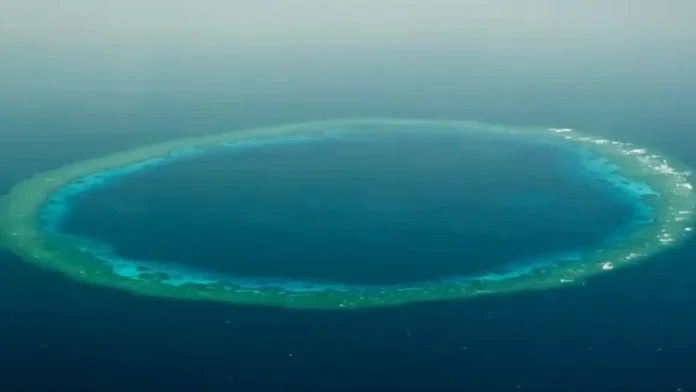When researchers in Saudi Arabia discovered dozens of blue holes during their scientific research expedition in the Red Sea in 2022, they knew it was only the start of their marine exploration.
In a short video released by the Kingdom’s National Center for Wildlife, scientists have revealed how the natural phenomenon marked a significant milestone in oceanic exploration and conservation efforts, reports AlArabia English News service.
Blue holes are massive underwater sinkholes that are considered a diverse biological hotspot for marine life, including corals, sponges, sea turtles, fish, dolphins, sharks, whales, and other marine mammals. The geological formations extend hundreds of meters vertically deep into the ocean, making them difficult to access and explore.
In February 2022, the National Center for Wildlife partnered with the nonprofit ocean exploration organization OceanX and the King Abdullah University of Science and Technology (KAUST) to embark a four-month mission to produce the first-ever comprehensive survey of the area.
“In the 21st century, we may have the impression that we have already explored the oceans and that there is no more room for discoveries. But then to find something like the blue holes, a globally unique feature, it still is a surprise,” Dr. Carlos Duarte, an Ibn Sina Distinguished Professor of Marine Science at KAUST, said in a video released after the survey.
Blue holes are an interesting phenomenon, according to Dr. Mohammad Ali Qurban, the CEO of the National Center for Wildlife, because the top of these formations are rich in biodiversity and healthy coral reefs.
However, inside the blue holes oxygen is scarce – making it a home only for creatures who have been able to adapt to the low-oxygen environment.
The discovery of the blue holes provides scientists with the opportunity to uncover their ecological significance and preserve and ensure the long-term health of these vulnerable ecosystems.
“That is a super interesting and almost like a natural laboratory for us to study,” Research Scientist at KAUST Dr. Shannon Klein said.
The limited knowledge scientists had on the Red Sea only came from bathymetric surveys dating from two centuries ago, according to the center.
“One of the main challenges we focused on was that the navigational maps or how deep some of these areas are within this labyrinth of coral reefs which have not been explored since 1888,” Klein said.
“We are truly exploring things that have not really been seen for well over 100 years. This is really a true exploration of this area of the southern Red Sea to dive deep and characterize them from underneath, take samples and understand the environment down there.”
The National Center for Wildlife, along with its partners, will continue to conduct studies and research projects to better understand how these invaluable marine environments can be protected, aligning with the goals of the Saudi Green Initiative to protect 30 percent of its terrestrial and marine areas.

















